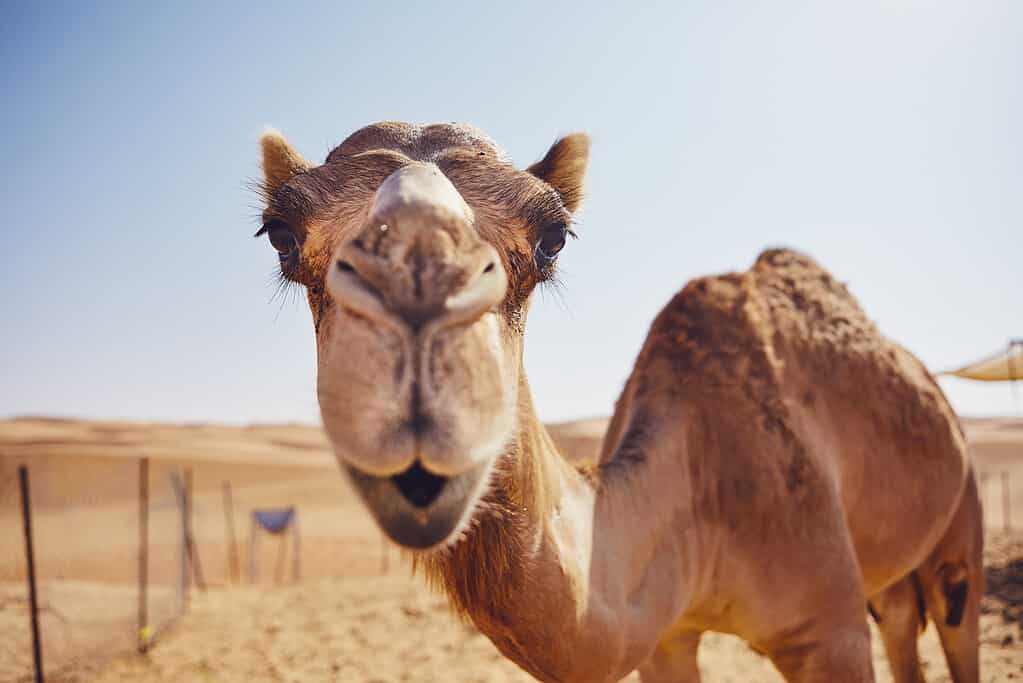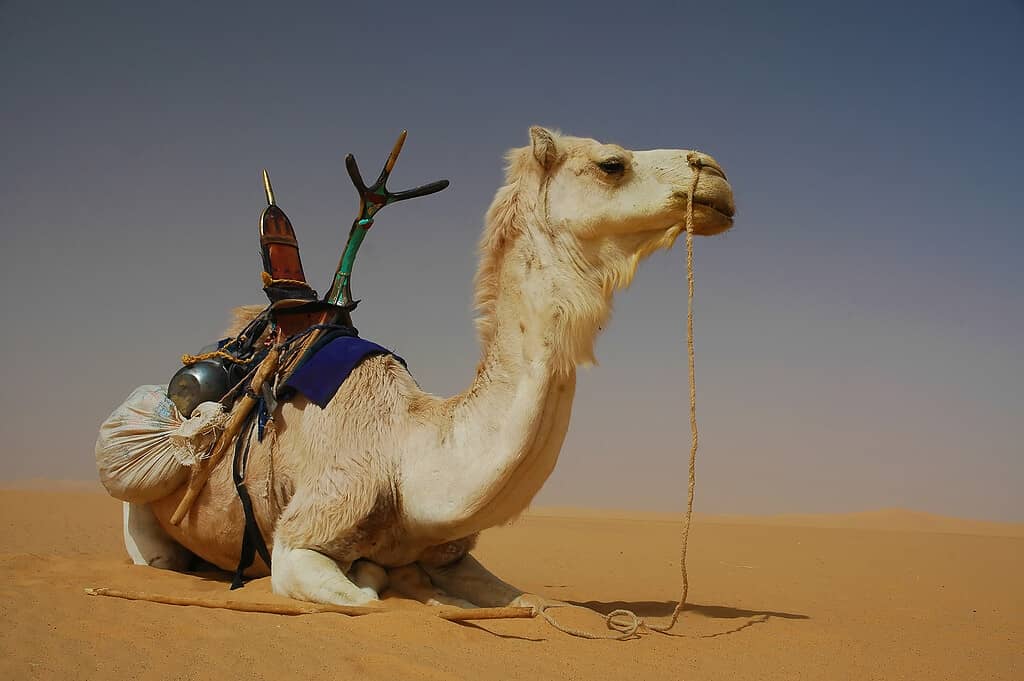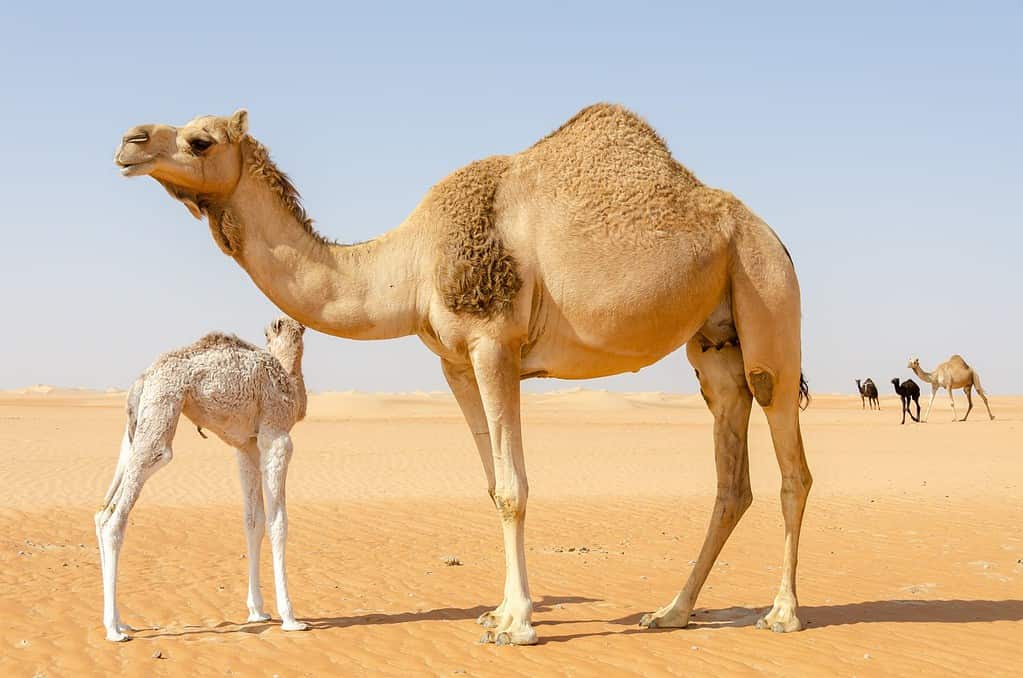
This close-up view of a curious camel shows their prehensile lips.
©Chalabala/iStock via Getty Images
The camel is a fascinating desert creature with a highly unique physiology. But many of us know very little about this interesting animal. For example, it’s a common misconception that camels store water in their humps. Camel humps are made of fat, not water. This fat storage enables them to draw energy during periods when little water or food is available. So, how long can a camel go without water?
The Camel

Camels in the Sahara Desert during the winter could survive up to six or seven months without water.
©Trevor Kittelty/iStock via Getty Images
The early camels ranged from Asia to Eastern Europe. However, there is evidence that some crossed into Africa. Today, most camels in the world are located in Asia.
Historically, camels have been used to transport goods. Some camels are also used for daily travel and transportation, similar to a horse.
When it comes to the camel’s physical body, they have many features that make them well adapted to life in the desert, as well as excellent pack animals. Cushioned foot pads assist in their ability to travel long voyages. Even more, camel noses function as a dehumidifier for their whole system. With each exhalation, instead of losing water to the environment, camels decrease the temperature of the exhaled air, allowing any water vapor to be reabsorbed by the camel. And, somewhat amusingly, camels’ prehensile lips can grab and maneuver items!
Why Do Camels Have Humps?

A camel’s humps offer fat storage for any potential future energy expenditure.
©Lotta Axing/Shutterstock.com
Let’s unpack the purpose of camel humps.
Historically, camels were located in desert areas that had little water or vegetation. This meant that fat storage was necessary to supply their energy needs. The fat stored in a camel’s hump is burned for energy needed for survival.
Camels can lose nearly 30% of their body weight in water without suffering any major physical concerns. By comparison, many animals would perish after just 12% of body weight water loss.
Can Camels Survive a Long Time Without Water?
Whether or not a camel can survive long stretches of time without water depends on a number of factors, mainly climate, activity level, and access to food. For example, if temperatures are scorching, camels can only survive about five days without water. However, camels in the Sahara Desert during the winter could survive up to six or seven months without water, assuming they were eating plants that offered some type of hydration.
Since most camels are now typically domesticated, the majority might only be able to survive a few weeks without water.
The photo featured at the top of this post is © KamilloK/iStock via Getty Images
Thank you for reading! Have some feedback for us? Contact the AZ Animals editorial team.







